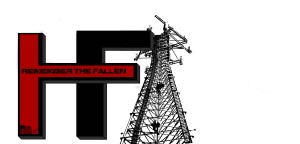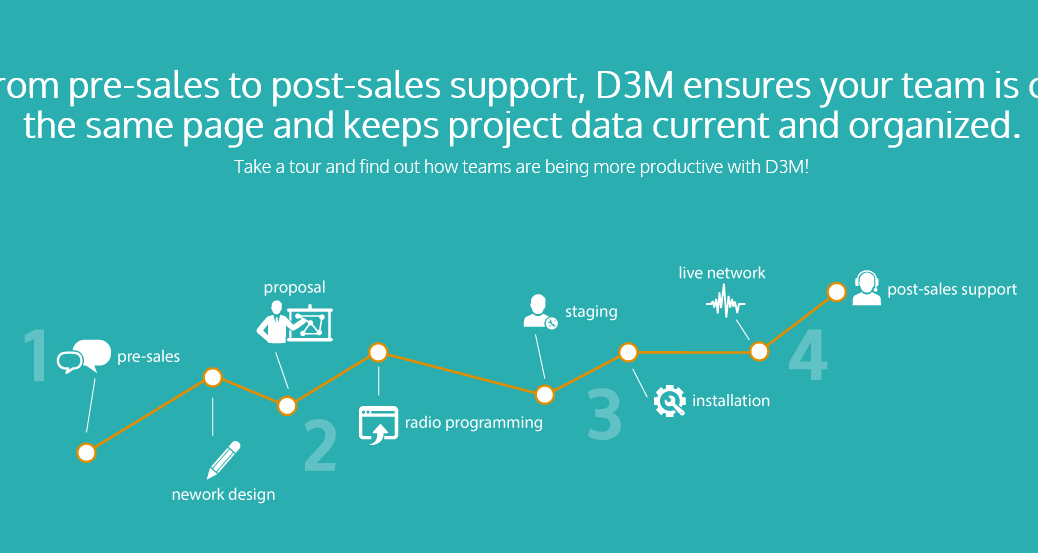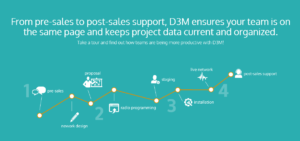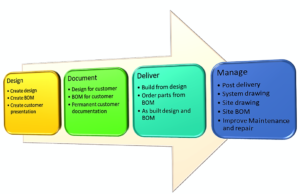Podcast: Play in new window | Download | Embed
Subscribe: Apple Podcasts | RSS
On today’s show I learned so much about lightning protection and surge protection. How do you protect your equipment from lightning, from surges? What about all the little surges that kill your equipment over time? I have the surge protection answer man, Jim Grasty, on the podcast to tall us some real world stories and give us solutions. Planning is the key, the more you do up front the better chance you have to not only increase your uptime but save money in the long run. Most companies seem to want to save money up front only to spend carelessly on maintenance. Well, I am getting ahead of myself, sorry, I am just excited to bring this to you.

So who is Jim Grasty and ALLTEC? Well, Mr. Grasty’s global business experience, as well as over thirty years in engineering and product design/development, has provided a solid basis for the successful completion of numerous critical projects requiring lightning protection, surge suppression and grounding site surveys, engineering studies and reports, and lightning risk analyses. In addition to his training, planning and supervision responsibilities, he has led over a hundred surveys and designs for lightning protection and electrostatic hazard mitigation in flammable environments. His research and technical coordination of product/design capabilities to achieve site specific lightning and electrostatic protection goals has provided state of the art implementations and assurance to diverse facilities world-wide.
Newsletter sign-up!
Subscribe–> iTunes or Stitcher or Overcast
Now, who is ALLTEC? That is the company that can give you end to end solutions for not only lightning protection, but surge protection in general. It’s not just about the big surges, it is about the breakdown of equipment over time. Now that we have fiber on the tower, it helps, but we are still bringing larger copper power lines down the tower and into the shelter as well as power in from the street. All of this could lead to disaster without the proper grounding and protection. ALLTECis a company that can provide your specific solution no matter what it may be. They provide you with the best solution for protection, they take all information into consideration when building a plan for you. Price may be an issue, so make it clear what your budget is and what your needs are. Also, think about your maintenance budget because what you spend up front may save you more money down the line. Proper planning could save you a lot of money down the road.
Lightning protection is a big deal, for those of you that do it you know what effort goes into protecting a tower site. Getting the 5 ohms to ground is quite a feat sometime. But, what happens when a data center takes a hit? Think it doesn’t happen, well, Jim brings up the story of a Google data center that got hit and wiped them out, the story can be found here. It was in Belgium and really disrupted the cloud services back in 2015.
 The Wireless Deployment Handbook eBook that covers professional carrier end to end deployment of LTE small cells, CRAN, and DAS showing you the proper way to plan for deployment then execute.
The Wireless Deployment Handbook eBook that covers professional carrier end to end deployment of LTE small cells, CRAN, and DAS showing you the proper way to plan for deployment then execute.
Other surge protection pain points are not only when equipment blows due to that big surge, but what about when all the small surges start to cause problems. Jim explains what is happening over time when that happens. They aren’t noticeable problems at first but over time your equipment may fail or worse, become intermittent. Then you troubleshoot until there is not end only hoping that the equipment fails so you know what to replace. I have been there and done that! It is a serious pain point that will not only disrupt service but costs a lot of money in man-hours trying to figure out that is failing. Of course, no one looks at that as a surge protection problem, do they?
One thing that comes up again and again is planning. Plan to do the surge protection up front and you save a lot of money on maintenance down the road. That is why the owner or lead person has to be involved because then you see the larger end to end picture that affects not only the installation budget but the maintenance budget and the spares budget. One thing I learned in deployment is that everyone looks at the high cost of deployment but maintenance doesn’t seem to get noticed until the warranty ends, then it’s a real issue. By the way, not many warranty items cover lightning strikes, am I right?
TOWER CLIMBING: AN INTRODUCTION (The book about getting started as a tower climber)
Well, you heard me talk about it but your best bet is to listen to Jim on the podcast. He tells us about solutions and real world stories. He covers mostly telecom but also explains how they protect data centers and building and more. Jim is really a well-rounded engineer when it comes to surge protection. He won’t point you in one direction, but in the right direction for your needs.
One thing that Jim brought up is that you need to face reality, sometimes you can’t design the perfect system, not cost effectively, and he knows that. So they do make the effort to balance your budget with realistic expectations. Especially for tower sites, it could take too much copper to reach the ideal goal, so set the expectation to a realistic goal. All they ask is that you know your goal for the situation.
Well, you heard me talk about it but your best bet is to listen to Jim on the podcast. He tells us about solutions and real world stories. He covers mostly telecom but also explains how they protect data centers and building and more. Jim is really a well-rounded engineer when it comes to surge protection. He won’t point you in one direction, but in the right direction for your needs.
One thing that Jim brought up is that you need to face reality, sometimes you can’t design the perfect system, not cost effectively, and he knows that. So they do make the effort to balance your budget with realistic expectations. Especially for tower sites, it could take too much copper to reach the ideal goal, so set the expectation to a realistic goal. All they ask is that you know your goal for the situation.
Jim tells a few real life customer stories about grounding situations for a tower site with really rocky ground. They found a way to make it the best grounding solution you could get for a better grounding situation for a good price. Proper planning made the difference and save the customer money by not going the trial and error route.
If you want to see what ALLTEC can do, visit http://alltecglobal.com/ but your best bet is to visit the resources page at http://alltecglobal.com/resources/ to see what they can do. We talk about this in the podcast, the “Lightning Risk” icon and you can see options that help you assess risk, I think that is pretty cool. Go ahead, try it, you know you want to!
For more information from ALLTECand about lightning and surge protection call 800.203.2658 or 828-646-9290 or go to these resources:
- http://alltecglobal.com/
- http://alltecglobal.com/resources/articles/
- http://alltecglobal.com/resources/news/
- http://alltecglobal.com/resources/lightning-risk-assessment/
- http://alltecglobal.com/news/10-steps-complete-lightning-safety/
- http://alltecglobal.com/articles/importance-spd-protecting-uninterruptible-power-supply-ups/
- http://alltecglobal.com/resources/alltec-catalogs/
- http://alltecglobal.com/resources/application-maps/
- http://alltecglobal.com/resources/brochures/
- http://alltecglobal.com/applications/
- http://alltecglobal.com/products/
- http://alltecglobal.com/services/
- http://alltecglobal.com/wp-content/uploads/Engineering-Services-Brochure.pdf
They offer a lot of good information.
So let me know what you think, email wade4wireless@gmail.com when you think of something to say!
Be smart, be safe, and pay attention!
Do you know what to put in your SOW, the details needed to get paid for milestones or job completion? Would it hold up in claims court? Would you rather plan up front instead of fighting for it after the job is done?
Scope of Work tutorial for the contractor to keep both sides doing the right thing for payment.

































